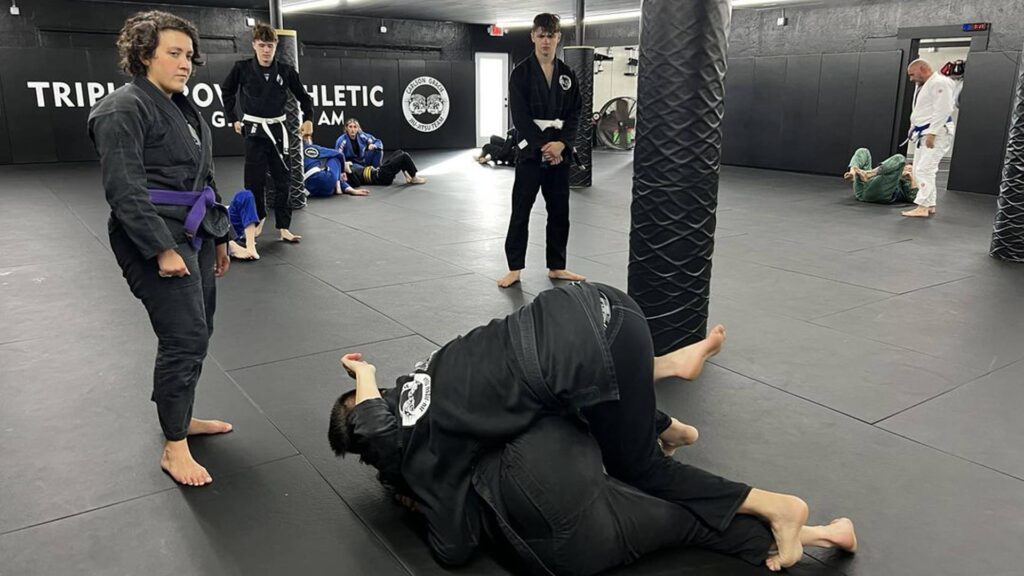Introduction
Brazilian Jiu-Jitsu (BJJ) is a martial art focused on grappling and ground fighting, emphasizing techniques that allow a smaller person to defeat a larger opponent through leverage and skill. Understanding its history provides insight into its techniques, culture, and global impact.
Origins of Brazilian Jiu-Jitsu Roots in Japanese Jiu-Jitsu and Judo
- Mitsuyo Maeda’s Influence: Mitsuyo Maeda, a skilled judoka and prizefighter, traveled from Japan to Brazil in 1914. He introduced Jiu-Jitsu and Judo techniques to the Brazilian people, showcasing the effectiveness of these martial arts through demonstrations and matches.
- Introduction to the Gracie Family: Carlos Gracie, the eldest son of a prominent Brazilian family, began training under Maeda in 1917. Carlos absorbed Maeda’s techniques and philosophies, laying the foundation for what would become Brazilian Jiu-Jitsu.
The Gracie Family and the Birth of BJJ Carlos Gracie Sr.
- Establishment of the First Gracie Academy: In 1925, Carlos Gracie opened the first Gracie Academy in Rio de Janeiro. He began teaching and refining the techniques he learned from Maeda, adapting them to suit his smaller frame and the realities of self-defense.
- Emphasis on Challenge Matches: To prove the effectiveness of BJJ, Carlos and his brothers issued open challenges to practitioners of other martial arts. These “Gracie Challenges” played a significant role in popularizing BJJ.
Helio Gracie’s Innovations
- Adaptation for Smaller Practitioners: Helio Gracie, Carlos’s younger brother, was frail and unable to perform many of the techniques as taught. He adapted them to rely more on leverage, timing, and technique rather than brute strength. Helio’s modifications became fundamental to BJJ’s philosophy.
- Legacy of Helio Gracie: Helio’s contributions were critical in shaping BJJ into a distinct martial art. He continued to teach, compete, and challenge fighters from other disciplines, cementing the Gracie name in martial arts history.
Development and Spread of BJJ Early Competitions and Challenges
- Vale Tudo Fights: These no-holds-barred matches were common in Brazil and provided a proving ground for BJJ. The Gracies, particularly Helio and Carlson, participated in these matches, demonstrating BJJ’s effectiveness in real combat situations.
- Influence of Carlson Gracie: Carlson Gracie, one of Helio’s sons, furthered BJJ’s development by incorporating a more aggressive, physically demanding approach. His success in competitions attracted many students, expanding the reach of BJJ.
Helio Gracie’s Innovations
- Rorion Gracie’s Efforts: In the 1980s, Rorion Gracie, one of Helio’s sons, moved to the United States to introduce BJJ. He established the Gracie Academy in Torrance, California, and began teaching and promoting BJJ.
- Creation of the UFC: Rorion co-founded the Ultimate Fighting Championship (UFC) in 1993. Royce Gracie, another of Helio’s sons, competed and won multiple UFC events, showcasing the effectiveness of BJJ against various martial arts styles. This exposure led to a surge in BJJ’s popularity.
Modern Evolution of BJJ Sport Jiu-Jitsu
- Establishment of Competitive Frameworks: The International Brazilian Jiu-Jitsu Federation (IBJJF) was founded to organize competitions and establish standardized rules. Major tournaments like the World Championships and the Pan American Championships became focal points for practitioners.
- Development of Techniques: BJJ continues to evolve, with practitioners developing new techniques and strategies. Innovations such as the berimbolo, worm guard, and various leg lock systems have expanded the technical repertoire of BJJ.
Influence of Mixed Martial Arts (MMA)
- Integration into MMA: BJJ became a foundational discipline in MMA training. Fighters trained in BJJ have consistently demonstrated its effectiveness in the octagon, solidifying its importance in modern combat sports.
- Prominent Figures in MMA: Notable fighters like Demian Maia, Ronaldo “Jacaré” Souza, and the Diaz brothers have showcased high-level BJJ in MMA, further promoting its value.
Gi vs. No-Gi
- Differences and Similarities: Training with the gi (traditional uniform) emphasizes grips and control, while no-gi focuses on speed and athleticism. Both styles offer unique benefits and challenges, and many practitioners train in both to become well-rounded.
- Prominent Competitions and Practitioners: Events like the ADCC (Abu Dhabi Combat Club) highlight no-gi competition, attracting top grapplers from around the world. Practitioners like Gordon Ryan and Eddie Bravo have made significant contributions to the no-gi scene.
Current Trends and Future Directions Innovations in Techniques and Training
- Continuous Evolution: BJJ is characterized by its dynamic nature. Practitioners are constantly developing new techniques and refining existing ones. This continuous innovation keeps the art relevant and exciting.
- Cross-Training: Many BJJ practitioners incorporate training from other martial arts, such as wrestling, judo, and sambo, to enhance their grappling skills.
BJJ Community and Culture
- Global Growth: BJJ academies have sprung up worldwide, making the art accessible to a diverse range of people. The sense of community and camaraderie in BJJ academies fosters a supportive and inclusive environment.
- Inclusivity and Diversity: BJJ has become increasingly inclusive, with more women, children, and individuals from various backgrounds participating. Programs and initiatives aimed at underrepresented groups have helped broaden the sport’s appeal.
Conclusion
Brazilian Jiu-Jitsu has come a long way from its roots in Japanese Jiu-Jitsu and Judo. Through the dedication and innovation of the Gracie family and countless practitioners worldwide, BJJ has evolved into a respected martial art and sport. Its emphasis on technique, leverage, and adaptability ensures that it will continue to thrive and inspire future generations.Want to know more? Click here


